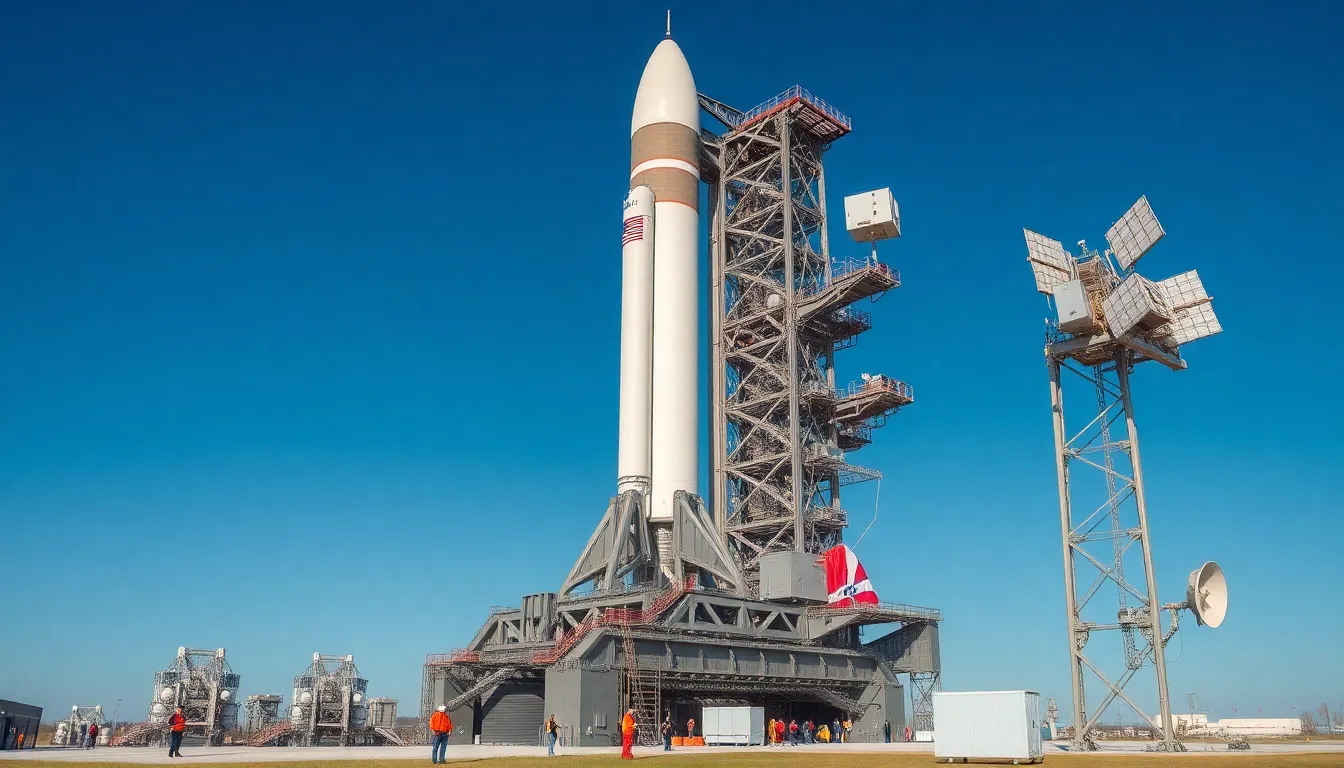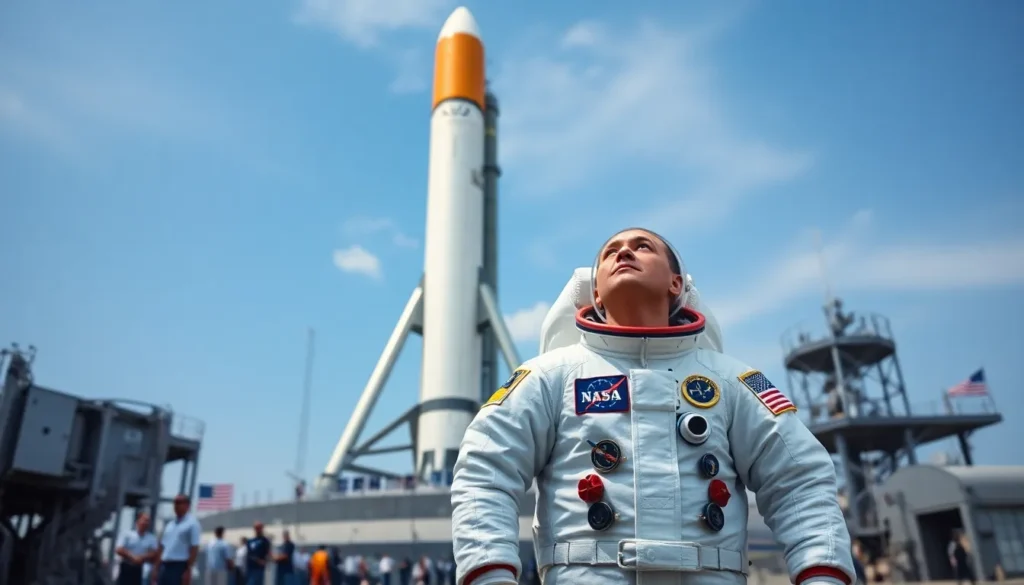Table of Contents
ToggleThe space race wasn’t just about sending humans into orbit; it was a cosmic showdown that birthed groundbreaking technologies we now take for granted. Imagine a time when the biggest question wasn’t “What’s for dinner?” but “How do we get to the moon before the other guy?” From rocket science to satellite communications, the innovations that emerged from this fierce rivalry still shape our lives today.
As nations scrambled to outdo each other, they inadvertently launched a treasure trove of inventions. Ever used GPS to find the nearest taco truck? Thank the astronauts! Curious how your smartphone can take stunning photos? Blame it on the quest for lunar exploration. Buckle up as we explore the quirky yet brilliant technologies that zoomed out of the space race and into our everyday lives.
Overview of Space Race Technology
The space race sparked a wave of innovations with lasting effects. Technologies developed during this era include advancements in rocket systems, enabling reliable transportation to space. The competition also fostered the creation of satellite technology, revolutionizing communication and data transmission.
Various materials science breakthroughs emerged, enhancing equipment durability. Engineers developed new alloys and ceramics that withstand extreme conditions in space. Spacecraft design evolved significantly, driven by the quest for efficiency and safety. Control systems advanced, improving navigation and orbital stabilization capabilities.
Computing technology saw rapid growth due to the demands of space exploration. The development of miniaturized components made space instruments lighter and more powerful. Moreover, software algorithms improved data processing and mission planning.
The medical field benefited from research conducted for astronauts. Techniques for monitoring health, nutrition, and exercise became essential, influencing practices on Earth. Telemedicine also originated from space missions, allowing remote medical assessments.
Education and collaboration among scientists grew during this period. International partnerships formed to tackle complex challenges, inspiring today’s cooperative space initiatives. Research in physics, astronomy, and environmental science advanced substantially.
Technologies rooted in the space race now drive everyday applications. GPS systems, once reserved for military use, guide millions worldwide. High-resolution satellite imagery enhances weather forecasting and disaster management. Camera technologies, originally developed for space missions, now feature in smartphones, capturing high-quality images.
Technological advancements from the space race continue to impact society profoundly. Enhanced communication tools, improved healthcare practices, and innovative materials all trace their origins back to this pivotal time in history.
Key Innovations of the Space Race

The space race fostered significant technological advancements that transformed both aerospace and everyday life.
Rockets and Propulsion Systems
Innovations in rockets and propulsion systems defined the era. Liquid-fueled rockets like the Saturn V launched humans to the Moon, showcasing unmatched power and reliability. Solid-fuel technology improved booster performance, facilitating successful satellite deployments. Engineers developed guidance systems that ensured precise navigation and optimized flight paths, increasing mission success rates. The development of reusable spacecraft, exemplified by the Space Shuttle, reduced launch costs and revolutionized access to orbit. Enhanced materials science also played a critical role, allowing for lightweight, durable rocket components designed to withstand extreme conditions. Various countries contributed to these advancements, accelerating innovations across the globe.
Satellites and Communication Technology
Satellite technology emerged as another hallmark of the space race. The launch of Sputnik 1 in 1957 initiated a new era of communication capabilities. Satellites enabled global broadcasting, connecting people like never before. Advancements in satellite design allowed for improved orbit stability and increased data transmission rates. Applications for remote sensing emerged, yielding crucial weather data and agricultural insights. Development of communication satellites enhanced telecommunications, providing a foundation for modern services like GPS and internet connectivity. Each innovation paved the way for enhanced communication, illustrating the transformative impact of space race technology on society.
Impact on Modern Technology
Space race technology significantly shapes modern technological advancements. Innovations in this era influence various fields, from communication to healthcare.
Advances in Aerospace Engineering
Aerospace engineering achieved remarkable strides during the space race. Rocket design underwent significant improvement, enhancing reliability in space missions. Saturn V, a prime example, demonstrated unprecedented lifting capabilities, supporting large payloads for lunar landings. Furthermore, materials science developed new composites that provided strength while reducing weight. Efficiency in engine design also saw improvements, facilitating higher thrust-to-weight ratios. Safety measures advanced with comprehensive testing protocols, promoting confidence in manned space missions.
Spin-Off Technologies
Numerous spin-off technologies emerged from space race research. Satellite technology laid the foundation for global communications, including television and the internet. Increased computing power in spacecraft resulted in modern microprocessors, revolutionizing consumer electronics. Medical innovations, such as advanced imaging techniques, stemmed from space-related research and enhanced diagnostic capabilities on Earth. Additionally, materials developed for spacecraft insulation found uses in home appliances, improving energy efficiency. These innovative technologies showcase the far-reaching effects of the space race, extending benefits across diverse industries.
The Role of Governments and Agencies
Governments and agencies played crucial roles during the space race, driving significant advancements in space technology. The United States and the Soviet Union emerged as the primary competitors, with agencies like NASA and Roscosmos leading their respective efforts. Funding from these governments fueled innovative research, propelling numerous projects that transformed aerospace engineering.
Investment in human resources also contributed extensively to technological growth. Governments recruited top scientists, engineers, and researchers, fostering an environment ripe for breakthroughs. Collaboration among these professionals resulted in cutting-edge solutions essential for space exploration.
Policymaking significantly influenced technological development during this period. National priorities shifted to promote scientific research and exploration as public interest in space grew. Political competition spurred rapid advancements, exemplifying how international rivalry can benefit technological sectors.
The space race created a platform for international collaboration as well. It led to the establishment of treaties, such as the Outer Space Treaty of 1967, ensuring that space activities promoted peaceful exploration. Cooperation among countries eventually paved the way for joint missions and collaborative research projects.
Agencies also focused on education and public engagement. By inspiring the next generation of scientists and engineers, they ensured continued interest in space exploration. Educational initiatives like STEM programs encouraged youth participation, fostering skills pivotal for future advancements.
Overall, governments and agencies laid the groundwork for the technological innovations that emerged during the space race. Their investments in research, policymaking, and collaboration fostered an era of unprecedented growth, impacting not only space exploration but also numerous technological fields.
The legacy of space race technology is undeniable. It shaped not only the future of space exploration but also revolutionized everyday life. Innovations born from this fierce competition continue to enhance communication, healthcare, and various technological fields.
As society moves forward, the principles and advancements established during the space race will remain vital. They inspire new generations to push boundaries and explore the unknown. The ongoing collaboration in space initiatives reflects the spirit of innovation that began decades ago, ensuring that the impact of these technologies will be felt for years to come.




